When the Dutch and the French, and later the English, began to enter into what would become New York State searching for trading partners in the seventeenth century, they encountered a large, well-organized alliance of tribes known as the Iroquois. The League of Five Nations, also known as the Iroquois Confederacy, was composed of five culturally and linguistically similar nations who had come together to promote peace among themselves.
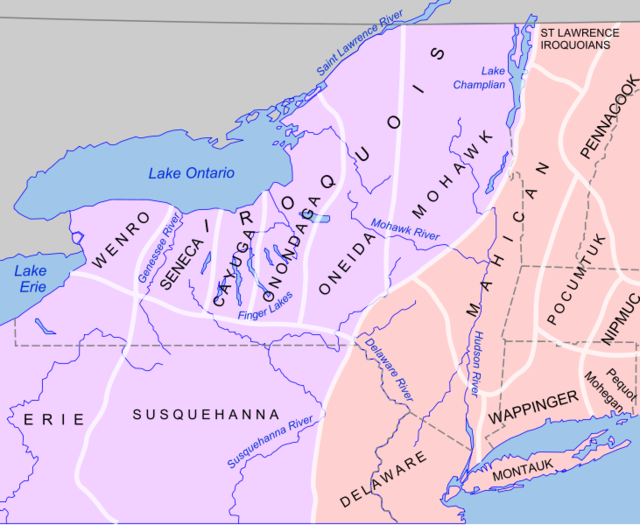
The map above shows the approximate location of the Iroquoian and Algonquian tribes when the Europeans first began to enter the area.
The designation “Iroquois” was given them by the French and was most likely a French mispronunciation of a derogatory term used to describe them by enemy peoples. They call themselves Haudenosaunee which is often translated to mean “People of the Longhouse” and they symbolize their confederacy as a longhouse with five hearth fires. The longhouse is symbolically seen as being oriented west to east, with the Seneca occupying the western door; then the Cayuga, the Onondaga, the Oneida, and, finally, the Mohawk occupying the eastern door.
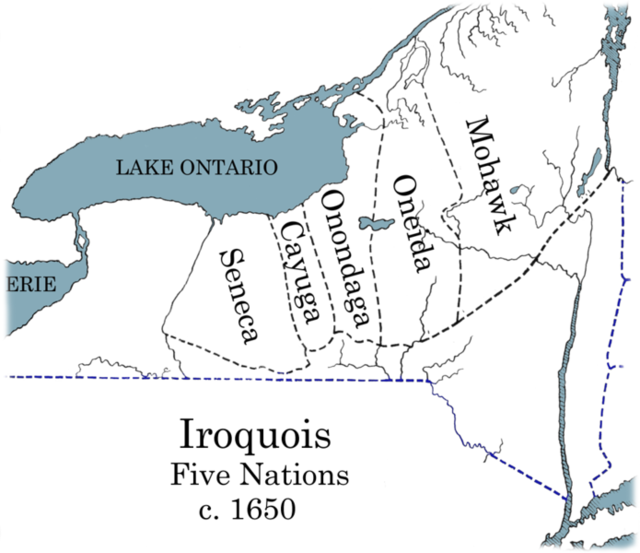
The map above shows the relative location of the five nations of the Iroquois Confederacy.
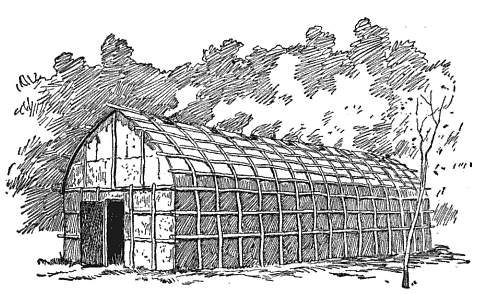
A drawing of an Iroquois longhouse is shown above.
Archaeologists have identified the ancestral Iroquoian culture in New York as the Owasco cultural tradition which began to flourish about 900 CE. The Owasco people were farmers whose lives centered on the raising of the Three Sisters: corn, beans, and squash. This vegetable diet was supplemented with a diversified subsistence of fish, game, and wild plants.
With agriculture, the Owasco people tended to be sedentary, living in villages, hamlets, and satellite camps. These ranged in size from a few dozen people to a few hundred people. At the beginning of the Owasco period, these ancestral Iroquois people built their villages in the fertile sites of their fishing grounds, on flood plains or just above on slightly higher terrain. Archaeologists have found numerous cache pits and remains of large vessels in these sites, which suggests that they had a stable and prosperous communal life.
The Owasco villages were made up of a number of longhouses. There was intense warfare between the communities: there was no over-arching political structure at this time.
The phase of Iroquois history called Carpenter Brook Owasco by archaeologists began about 1000 CE. This phase marked the beginning of a shift in settlement patterns from riverine villages to permanent towns located on hilltops.
In 1100 CE, ancestral Iroquoian people began to occupy the Maxon-Derby site. This site was an un-palisaded Owasco village which covered about two acres. It housed a maximum of 200 to 250 people. The people were living in small oblong houses with rounded ends. In addition to the small houses, there are two larger structures, about 60 feet in length, which resemble the later Iroquois longhouses.
By 1140, Owasco people were living at the Sackett site on Arsenal Hill near present day Canandaigua. This village covered more than three acres and was enclosed by an ellipsoidal ditch measuring 343 feet by 202 feet. The Owasco people dug the trench to a depth of two to three feet and to a width of seven to eleven feet. Within the village, the people were living in small wigwams. While there were no longhouses at the site, some of the features in the wigwams, such as narrow shelves or benches around the interior-are features which are found in later Iroquois longhouses.
In 1290, Owasco people established a village at the Chamerlin archaeological site. The village was surrounded by a palisade and contained longhouses which were up to 80 feet in length.
In 1300, the phase of Iroquois history called Oak Hill Iroquois by archaeologists began. During this time, Iroquois settlements were primarily permanent stockaded villages located in defensible sites. By this time, a pattern of village removals and resettlements had been established. Every 25 to 50 years, the villages would outgrow their sites, exhaust soil fertility and firewood, and would move two or three miles away.
In 1400, the phase of Iroquois history called Chance phase Iroquois by archaeologists began. In the Onondaga area there was a village resettlement which resulted in a larger village being fairly close to a smaller village. Having two towns fairly close to each other is a clear indication that they had some type of non-aggression pact and perhaps saw themselves as being part of the same nation and/or political entity.
In 1451, the Iroquois Confederacy-the League of Five Nations-was born when Deganawida, a Huron born of a virgin, crossed the great lake in a stone canoe and began to bring forth his vision of a great peace. Deganawida had a speech defect and had Hiawatha speak for him to the several Iroquoian tribes. As a result of their efforts, the Five Nations-the Seneca, Cayuga, Onondaga, Oneida, and Mohawk-met and buried the instruments of war and planted a pine tree of peace. The wampum belts recorded:
“I, Deganawida, and the union lords now uproot the tallest pine tree and into the cavity thereby made we cast all weapons of war. Into the depths of the earth, down into the deep underneath currents of water flowing to unknown regions we cast all the weapons of strife. We bury them from sight and we plant again the tree. Thus shall the Great Peace, Kayenarhekowa, be established.”
This was the alliance which the French, Dutch, and English encountered in the seventeenth century.
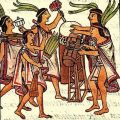
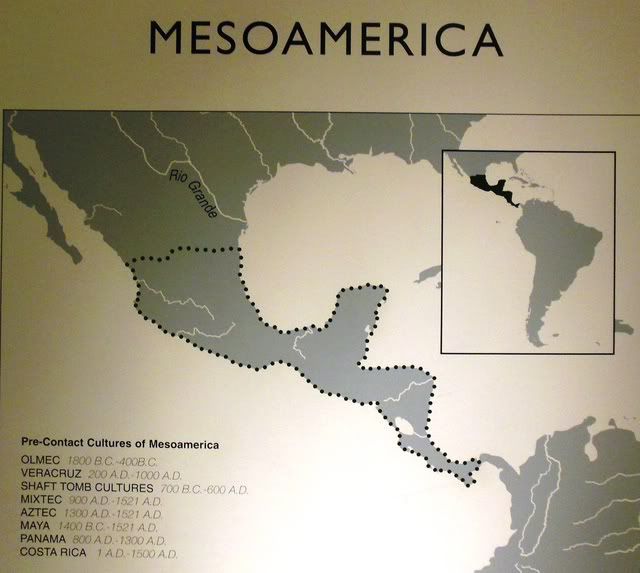
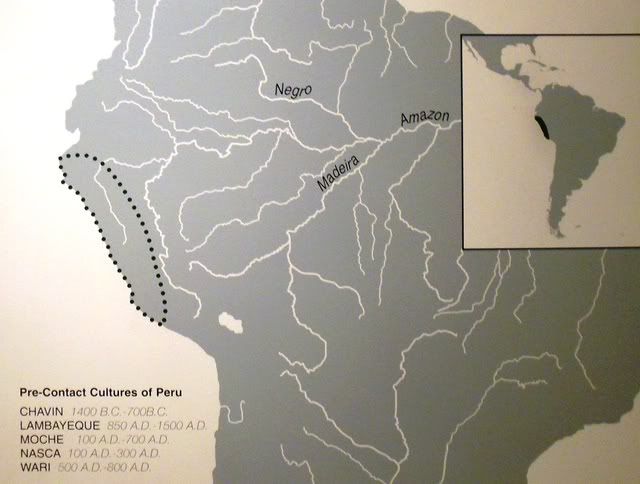
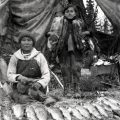
This post is completely outdated. The Owasco Culture is now recognized as having been Algonquian. The Iroquois likely did not occupy the Finger Lakes until around 1300 CE. The ancestral culture to the Five Nations is now believed to be the Clemson Island Culture in central Pennsylvania. Throughout this period the Iroquois were completely surrounded by Algonquians, from whom they borrowed technology, agriculture, and cosmology. The Owasco people were quite impressive, they just were not Iroquois.